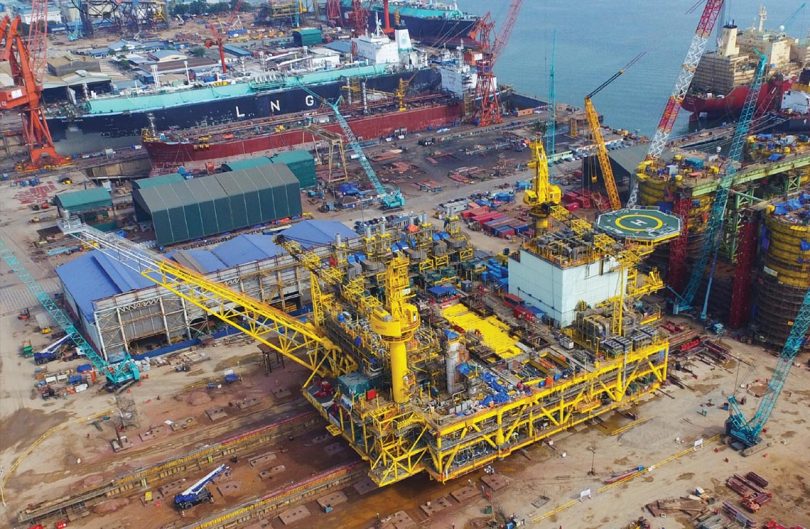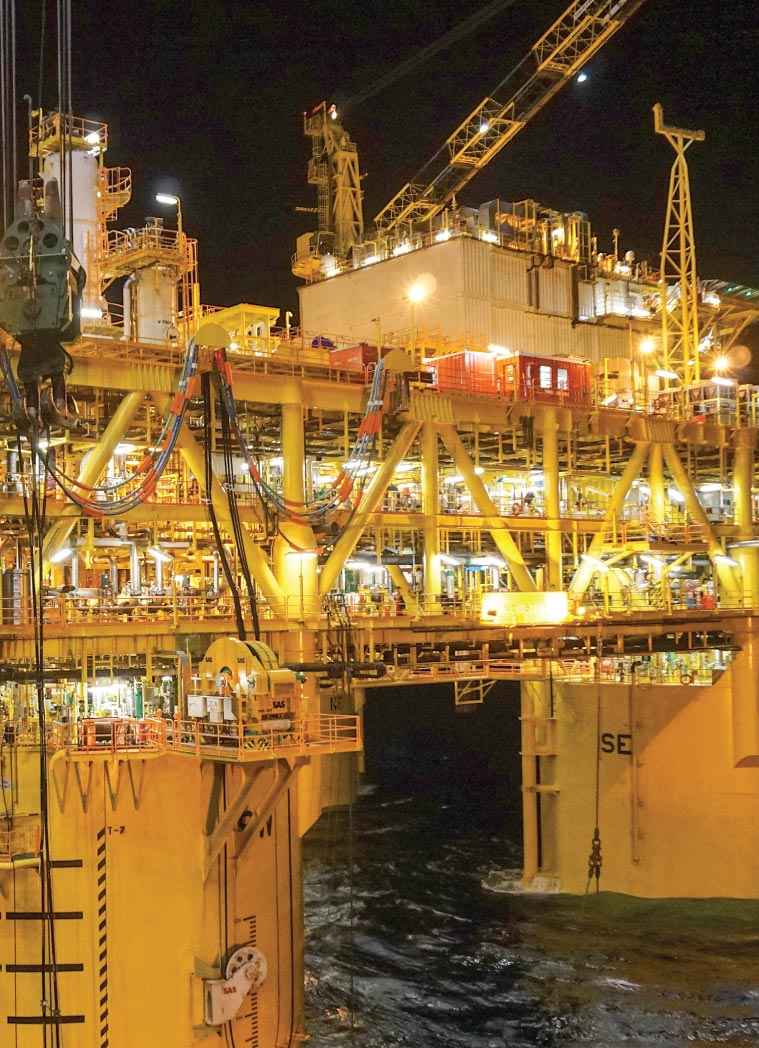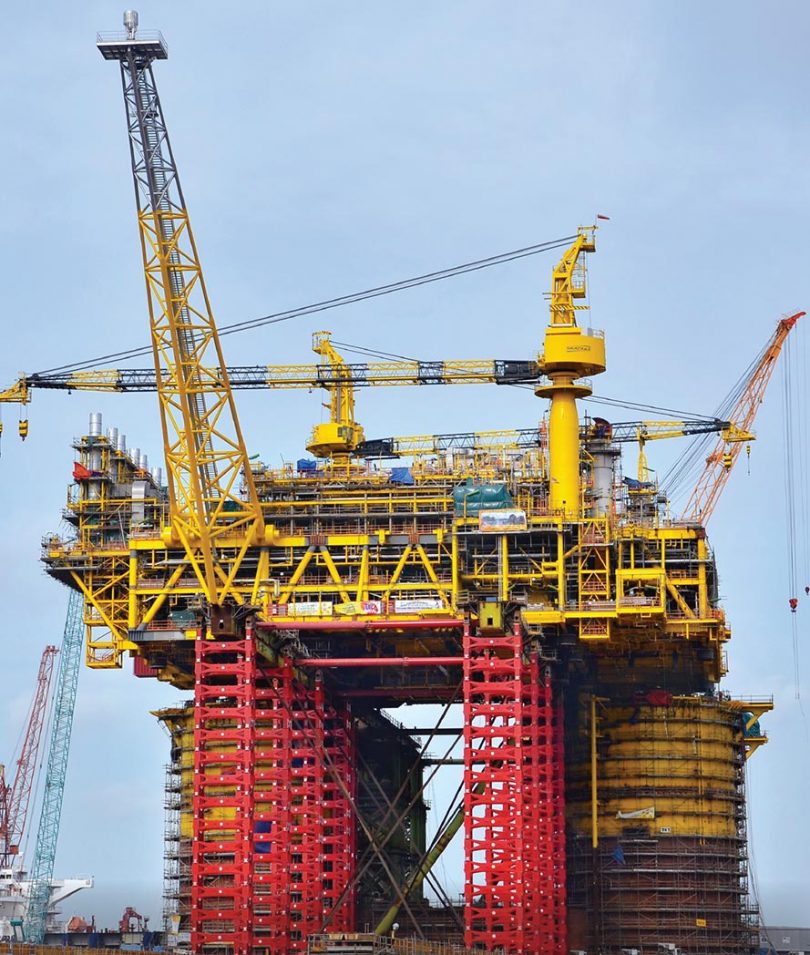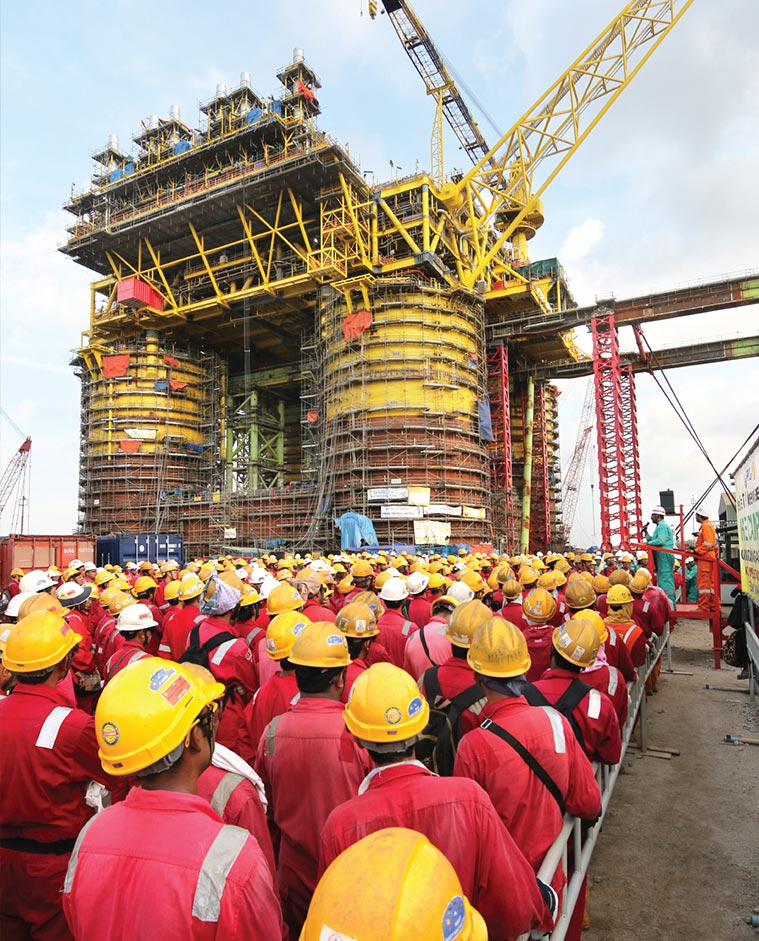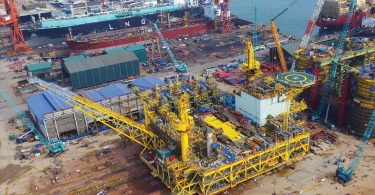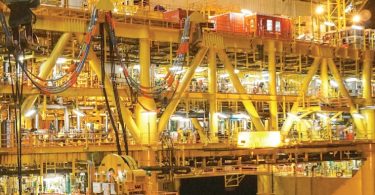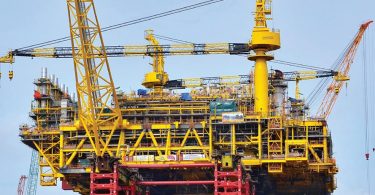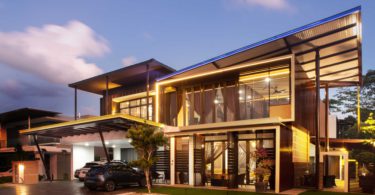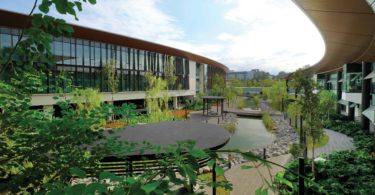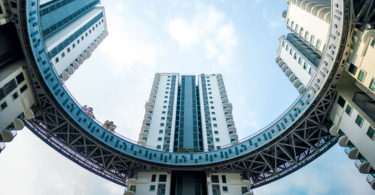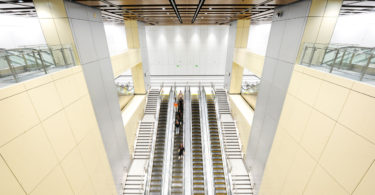Located about 100 kilometres from Sabah, the Malikai Tension Leg Platform (TLP) Project—a joint venture between Shell, ConocoPhillips Sabah and Petronas Carigali—is a key milestone in the Malaysian oil and gas industry as it introduced several advanced deep-water technologies to unlock deep-water resources safely and efficiently.
“It supports the country’s aspiration to be a hub for deep-water oil and gas within the region, bringing significant technology into Malaysia to nurture and develop local capability and capacity,” says Datuk Iain Lo, chairman of Shell Companies in Malaysia.
MEGA-STRUCTURE OF ‘FIRSTS’
The Malikai project has many ‘firsts’ under its belt. It is Shell’s first TLP outside of the US Gulf of Mexico and the first deep-water TLP in Malaysia. Malikai is also Shell’s first TLP to be coupled with a tender assisted drilling (TAD) rig, as opposed to using a permanent dedicated rig, which allows cost savings.
The TLP is a vertically floating oil production facility, moored to the seabed 500 metres underwater by a group of tethers (or tendons) at each corner, which are held upright in tension.
The 27,500-tonne TLP comprises a 13,800-tonne topside and a 13,700-tonne hull. The topside houses production decks, with a capacity of 24 well slots, and living quarters.
The production wellheads on deck are connected by risers (or pipes) directly to the subsea wells, instead of on the seafloor. This allows simpler well completion and gives better control over the production from the reservoir and easier access for downhole intervention operations.
The use of a unique, industry-first set of rigid risers for both drilling and production eliminates the cost of using two traditional sets of risers, while cutting the number of steps needed to drill a well.
The oil and gas are sent 50 kilometres to the Kebabangan Oil Hub for processing before evacuation to the onshore Sabah Oil & Gas Terminal for storage and offloading. A small amount of natural gas is used to power the platform and is pumped into the production tubing to help oil flow from the reservoir, via a technique known as ‘gas lift’.
Prior to the TLP installation, a fit-for purpose riserless vessel was used for top-hole drilling operations, while the riserless mud recovery technology prevented the discharge of drilling fluid and reduced environmental impact.
MADE IN MALAYSIA
The TLP is wholly designed and fabricated in Malaysia, via a joint-venture between Technip and Malaysia Marine and Heavy Engineering (MMHE) (TMJV), by a predominantly Malaysian project team.
The engineering and procurement was carried out at Technip’s Kuala Lumpur operating centre, while the hull and moorings engineering was performed by Technip MHB Hull Engineering. The Malikai TLP was constructed and commissioned at MMHE’s yard in Pasir Gudang, Johor.
The construction of the TLP by TMJV had its share of technical challenges, including the world’s highest-ever super lift operation of its kind. The super lift to integrate the topside— weighing equivalent to nearly 14,000 average family cars—with the hull was performed with a jack-up and skidding operation, reaching a height of up to 40 metres.
Upon completion of the onshore fabrication and commissioning activates, the Malikai TLP sailed from the Pasir Gudang yard on July 11, 2016 and achieved first oil on December 11, 2016. It is expected to have a peak production of 60,000 barrels per day.
Location: 100 kilometres off Sabah, Malaysia
Completion Date: December 2016
Water depth: Around 500 metres
Developers: Shell; ConocoPhillips Sabah Ltd; Petronas Carigali Sdn Bhd
Engineers: Technip-Malaysia Marine and Heavy Engineering joint venture
Key Contractors: Technip-MMHE JV; IEV/Heerema; Technip Marine; UMW/Dril-Quip
Images: Shell


